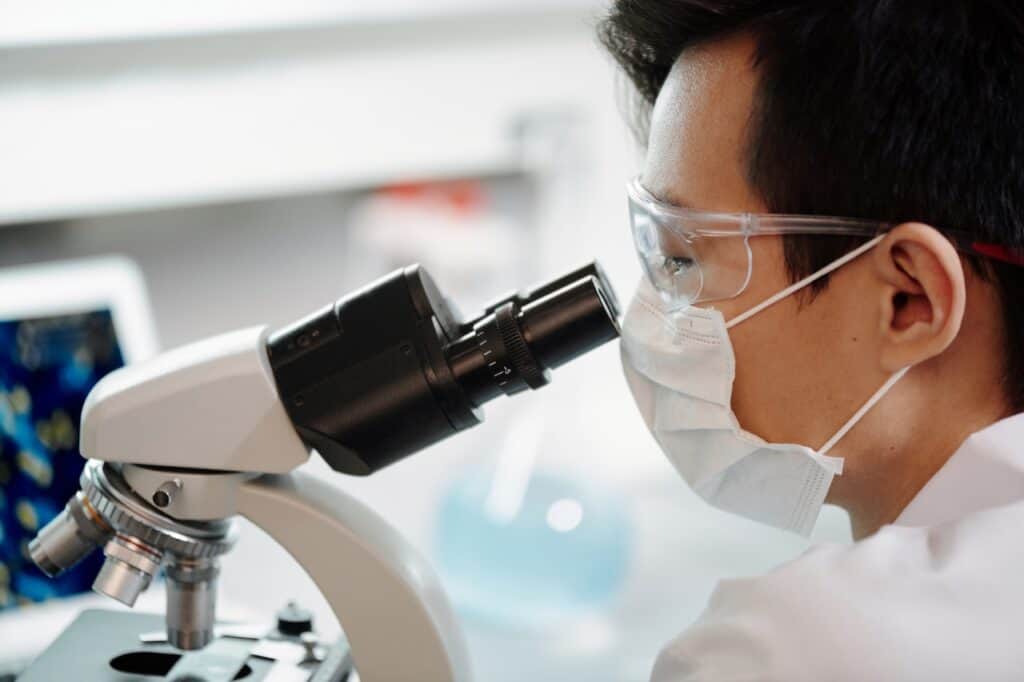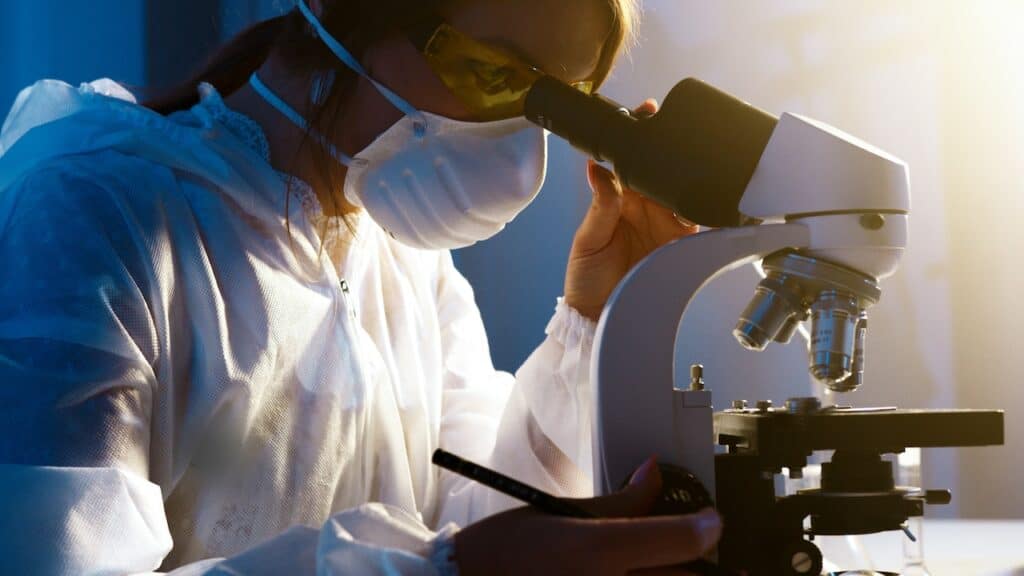A Comprehensive Guide to Microscope Rules and Best Practices in 2023!
- By admin
- 2023-07-07
- 0 comments

A Comprehensive Guide to Microscope Rules and Best Practices – Are you eager to delve into the world of microscopy? Well, before you embark on your microscopic journey, it’s essential to familiarize yourself with the rules of microscope usage. By following these rules, you can ensure optimal performance, accurate observations, and longevity of your microscope.
In this article, we will guide you through the essential microscope rules that every aspiring microscopist should know and abide by.
First and foremost, always handle the microscope with utmost care. Remember, a microscope is a delicate instrument, and any rough handling can damage its intricate components. When carrying the microscope, make sure to hold it firmly by the arm and base, avoiding any unnecessary jolting or shaking.
Additionally, when placing the microscope on a table or any other surface, do so gently to prevent any accidental damage. By treating your microscope with care, you can ensure its longevity and maintain its precision for years to come.
A Comprehensive Guide to Microscope Rules and Best Practices
Handling the Microscope with Care
Take a moment to learn how to handle the microscope with care and avoid any potential damage. First and foremost, always use both hands when carrying the microscope. This will ensure a secure grip and prevent any accidental drops.
Additionally, be mindful of the delicate parts, such as the lenses and stage, and avoid touching them with your fingers. Instead, use the provided knobs and controls to make adjustments. By following these simple guidelines, you can ensure the longevity and proper functioning of the microscope.
Next, it’s crucial to clean the microscope regularly to maintain its optimal performance. Use a soft, lint-free cloth to wipe away any dust or debris from the lenses and the body of the microscope. Avoid using harsh chemicals or abrasive materials that could damage the delicate surfaces.
Furthermore, always store the microscope in a clean and dry environment to prevent any moisture or dust from accumulating. Taking these precautions will not only protect the microscope but also ensure that you get accurate and clear observations every time you use it.
Remember, proper handling and maintenance are key to getting the most out of your microscope.
Cleaning and Maintenance of the Microscope

Make sure you regularly clean and maintain it to keep it in good working condition.
Cleaning the microscope is essential to ensure clear and accurate observations.
Start by using a soft, lint-free cloth to wipe away any dust or debris from the exterior surfaces.
Be gentle and avoid using rough materials that could scratch the microscope.
For the lenses, use lens paper or a clean, soft cloth to gently remove any smudges or fingerprints.
It’s important to avoid touching the lenses with your fingers as the oils from your skin can leave residue and affect the clarity of the images.
In addition to regular cleaning, proper maintenance is crucial for the longevity of the microscope.
Check for any loose screws or parts and tighten them if necessary.
Inspect the electrical connections and cords to ensure they are secure and in good condition.
If you notice any signs of damage or malfunction, it’s important to have it repaired by a professional.
Regularly lubricating moving parts, such as the focus knobs, can help keep the microscope operating smoothly.
Remember to follow the manufacturer’s guidelines and recommendations for maintenance to ensure the best performance and longevity of your microscope.
Proper Illumination Techniques
To achieve optimal clarity and visibility, ensure you use proper illumination techniques when using your microscope. One important technique is to adjust the brightness of the light source. Too much brightness can cause glare and make it difficult to see the specimen, while too little brightness can result in a dim image.
Start by setting the light to a moderate level and then make small adjustments until you have a clear, well-lit view. Additionally, it’s important to position the light source correctly. The light should be directed from below the stage and should pass through the specimen. This allows the light to illuminate the specimen evenly and provides a clear image for observation.
Another key technique is to use the appropriate type of lighting for your specimen. Different specimens may require different types of lighting, such as brightfield, darkfield, or phase contrast. Brightfield illumination is the most common technique, where the light passes directly through the specimen. Darkfield illumination is useful for transparent specimens, as it creates a bright image against a dark background. Phase contrast illumination is ideal for observing living cells, as it enhances the contrast between different parts of the specimen.
By selecting the right lighting technique for your specimen, you can enhance the visibility of details and improve the overall quality of your observations. Remember to always adjust the lighting techniques according to the specific requirements of your sample to achieve the best results.
Adjusting the Focus and Magnification
Achieving optimal clarity and visibility requires adjusting the focus and magnification settings of the microscope. To begin, make sure the specimen is properly positioned on the stage and the microscope is turned on.
Next, use the coarse adjustment knob to bring the specimen into focus. This knob moves the stage up and down, allowing you to adjust the distance between the objective lens and the specimen. Turn the knob in small increments until the image becomes clear.
After achieving initial focus, it’s time to adjust the magnification. Most microscopes have a rotating nosepiece with multiple objective lenses of different magnifications. Start with the lowest magnification lens and gradually increase it until you get the desired level of detail.
Keep in mind that as you increase the magnification, you may need to readjust the focus using the fine adjustment knob. This knob moves the objective lens slightly to fine-tune the focus. Experiment with different magnifications to find the best balance between detail and clarity for your specific specimen.
By adjusting both the focus and magnification, you can make sure that you’re getting the most accurate and detailed view of the microscopic world.
Best Practices for Microscope Usage

Ensure you have a steady grip on the focus and magnification knobs as you explore the intricate details of the microscopic world. This is important to prevent any sudden movements that could disrupt your view or damage the delicate components of the microscope for your students.
By maintaining a firm hold on the knobs, you can smoothly adjust the focus and magnification settings, allowing you to observe the specimen with precision and clarity. Remember to make small, gradual movements when adjusting the knobs, as this’ll help you achieve the desired level of focus and magnification without overshooting or causing any unnecessary vibrations.
In addition to having a steady grip, it’s crucial to handle the microscope with care and respect. Always place the microscope on a stable surface to ensure its stability and prevent any accidental falls or damage.
When moving the microscope, use both hands to support it and keep it level. Avoid placing any unnecessary pressure or force on the microscope components, such as the stage or the objective lenses.
By treating the microscope with caution, you can prolong its lifespan and ensure accurate observations each time you use it. Remember, proper handling and maintenance of the microscope are essential for obtaining reliable and high-quality results in your microscopic explorations.
Microscope Rules
In conclusion, always handle the microscope with care to avoid any potential damage. Take the time to clean and maintain the microscope regularly to ensure optimal performance and longevity.
Proper illumination techniques are crucial for obtaining clear and accurate images, so make sure to adjust the light source accordingly.
Additionally, don’t forget to adjust the focus and magnification settings to achieve the desired level of detail.
Lastly, always follow best practices for microscope usage, such as avoiding rough handling, keeping the microscope covered when not in use, and using appropriate slides and coverslips.
By following these microscope rules, you can maximize the effectiveness and lifespan of your microscope, allowing you to conduct precise and reliable observations in your scientific endeavors.





